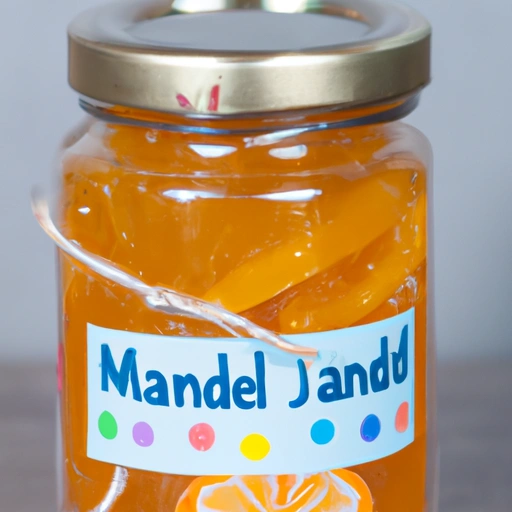Marmalade
Description

Marmalade is a fruit preserve made from the juice and peel of citrus fruits boiled with sugar and water. It typically has a soft jelly-like texture interspersed with pieces of fruit rind, often from oranges. The sweet and tangy flavor of marmalade makes it a versatile ingredient in various culinary traditions. It is available in different varieties and can range from sweet to bitter, depending on the fruit used and the preparation method.
Common uses
Marmalade is most commonly used as a spread on bread, toast, scones, and pastries. It is also incorporated into various sauces, marinades, and dressings, adding a unique citrus flavor that complements both sweet and savory dishes.
Nutritional value
Calories
One tablespoon (20 grams) of marmalade contains approximately 49 calories (204 kilojoules).
Protein
Marmalade is low in protein, with less than 0.1 grams per tablespoon.
Fat
This ingredient contains negligible amounts of fat, with less than 0.1 grams per tablespoon.
Carbohydrates
Most of the calories in marmalade come from carbohydrates, primarily sugars, with about 13 grams per tablespoon.
Vitamins
Marmalade contains small amounts of vitamin C and traces of other vitamins, depending on the fruit used.
Minerals
It offers trace amounts of minerals such as potassium and calcium.
Health benefits
While marmalade is high in sugar, the fruit content provides some dietary fiber and vitamin C. The pectin found in marmalade has been associated with health benefits such as improving digestion and lowering cholesterol.
Potential risks
The high sugar content in marmalade can contribute to increased calorie intake and potential weight gain if consumed in large quantities. It may also be unsuitable for individuals managing blood sugar levels, such as those with diabetes.
Common recipes
Marmalade is often used in traditional recipes like Victoria sponge cake, thumbprint cookies, and glazed meats. It is also a key ingredient in the classic Paddington cocktail and can be used to create marmalade-infused desserts.
Cooking methods
It can be used straight from the jar or incorporated into glazes, marinades, and batters. Marmalade can also be warmed to create syrups or melted into sauces.
Pairing with other ingredients
Marmalade pairs well with pork and duck, serving as a glaze or sauce component. Its citrus notes complement creamy cheeses like brie and can add zest to various desserts.
Summary
Marmalade is a citrus fruit preserve that enjoys global popularity for its vibrant flavor and versatility in the kitchen. Whether spread on morning toast or used as a sweet and tangy glaze for meats, marmalade adds a bright twist to countless recipes. While rich in sugars, it can also offer some nutritional benefits, making it a delightful ingredient to have on hand for both gourmet cooking and simple, comforting treats.